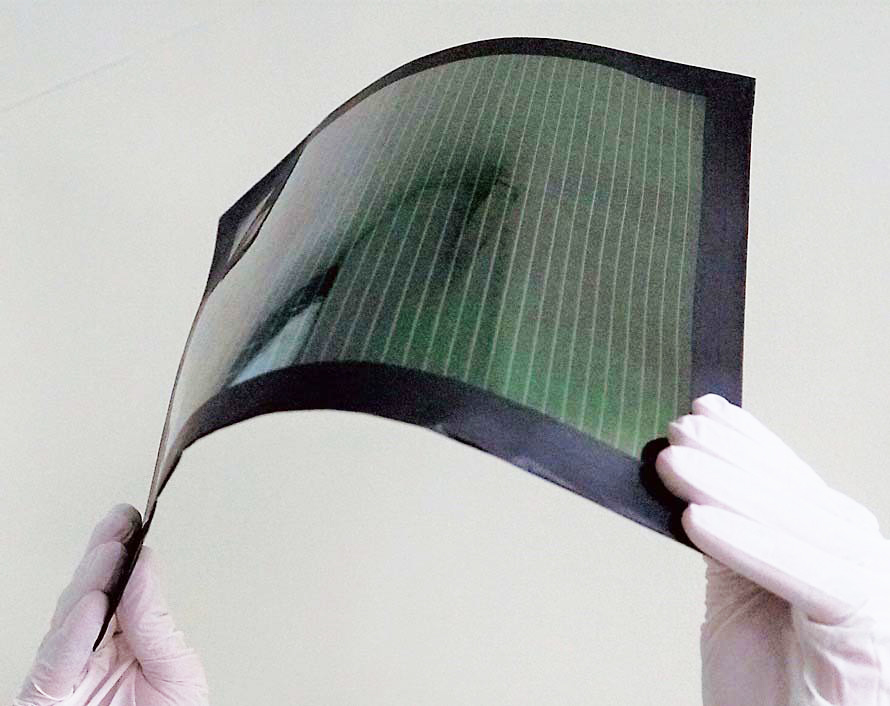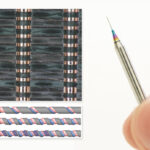ASIA ELECTRONICS INDUSTRYYOUR WINDOW TO SMART MANUFACTURING
Toshiba’s Film Photovoltaic Module Tops Record Efficiency
The next-generation film-based perovskite photovoltaic module of Toshiba Corporation is an epoch-making technology with high potential. It is light and easy to bend, can be installed in various places, and can even convert the entire city into a power plant. Toshiba used a simple deposition process to achieve 15.1 percent conversion efficiency.
The solar cell received the “Minister of Economy, Trade and Industry Award”, which is the highest award given at the CEATEC AWARD 2021 during the CEATEC 2021 ONLINE. It also won the “Minister of Internal Affairs and Communications Award,” and the Grand Prix in the carbon neutral category (Category Awards). During the evaluation, the solar cell was regarded for practical use and contribution to the expansion of renewable energy.

Renewable as Future Energy Source
The renewable energy is seen as the future main power source. Based on plans, renewable energy would chunk up about 36 to 38 percent of power generation in 2030 and about 50 to 60 percent in 2050. In particular, an increase in the amount of power generated by solar power is indispensable for the realization of carbon neutrality. In addition to improving the power generation efficiency, it is necessary to significantly expand the installation location.
While conventional mainstream crystalline silicon solar cells have high efficiency, the places suitable for installation are limited because of their weight and shape. To further expand solar power generation, it is necessary to develop a solar cell that can be installed in various places. It should have a conversion efficiency comparable to that of crystalline silicon.
Turning a City into Power Plant
Film-based perovskite photovoltaic modules are attracting attention as next-generation photovoltaics. This Japanese technology was invented by Professor Tsutomu Miyasaka of Toin University of Yokohama in 2009 and is considered as worthy of a Nobel Prize. Today, international competitions are being intensified for their practical use.
Simpler Deposition Process
Toshiba has developed a film deposition technology in which a perovskite layer is deposited in one step. This was simpler than the two steps required in conventional technology. The new process overcame the speeding up of film deposition process and making uniform the perovskite layer composition. It utilized a coating technique using meniscus, or a curved surface created by the surface of liquid in the gap due to interfacial tension.
Record Efficiency
As a result, uniform application over a large area has become possible. This sped up production process and improved energy conversion efficiency, which remained difficult until now. The company set a new energy conversion efficiency of 15.1 percent, up 1 percent from its conventional solar cell. It has entered the efficiency range of polycrystalline silicon solar cells, according to the person in charge.
Industry Expectations
The new solar cells are easily installed on rooftops and walls of buildings, factory roofs – a challenge with conventional solar cells. They can also generate electricity even under the shade. They can contribute to a carbon-neutral society by enabling spread of renewable energy through mass installation in urban areas.
Expectations are quite high in the industrial world. According to Sumitomo Bakelite Co., Ltd., if the film-based module is put into practical use, the company will introduce it on a large scale.
Kenji Todori, Senior Expert at Toshiba’s Corporate Research & Development Center said, “We are deeply honored to receive the prestigious award. We will proceed with research and development and try to put the solar cell into practical use as soon as possible as we aim to contribute to a carbon-neutral society, .”
Toshiba will continue to improve the solar cell’s efficiency in the future.




